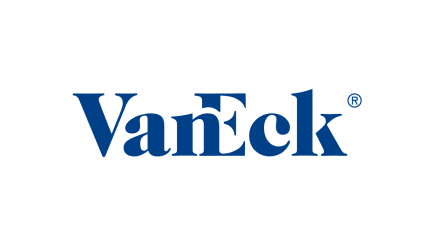By Natalia Gurushina
Chief Economist, Emerging Markets Fixed Income
EM’s cautious policy stance is very encouraging against the backdrop of the unapologetically hawkish U.S. Fed.
Fed Rate Hike Expectations
The market raised its peak rate expectations for the U.S. a little bit more, as the U.S. Federal Reserve’s (Fed’s) minutes signaled more rate hikes “in order to attain a stance of monetary policy that is sufficiently restrictive to return inflation to 2 percent over time”. This morning’s secondary estimate of the U.S. Q4 GDP was not incompatible with the “somewhat higher peak rate/slower rate cuts” scenario. Even though personal consumption was revised down (albeit not recessionary), the upside revision of Q4 GDP deflator was quite meaningful. Higher “risk-free” rates have a direct impact on emerging markets (EM) debt total return, and if this process is accompanied by higher rates’ volatility, spread returns on lower-rated EM bonds might get hit as well. This is exactly what happened during the reversal of January’s rally.
EM Monetary Policy Stance
A perception that a central bank might be falling behind the curve – or forced to ease prematurely – can weigh on bonds even during the “everything rally”. With that in mind, we are happy to report that EM “Alumni” echoed the Fed’s hawkish sentiment – Israel’s larger than expected hike a few days ago was followed by South Korea’s hawkish hold, which left room for more policy tightening due to high uncertainty about the inflation forecast. Back in “EM proper”, India’s central bank minutes signaled another rate hike in April – note that this came before January’s shocking upside inflation surprise. Mexico’s central bank minutes also showed a great deal of caution, with some board members saying that underlying inflation is more persistent than expected and that it might be risky to signal a smaller rate hike in March.
LATAM Rate Cycle
Mexico’s bi-weekly inflation prints showed that such caution is totally justified – despite a small downside surprise. Disinflation is still slow (see chart below), and both core and headline inflation are well above the target range. Brazil’s mid-month inflation release tomorrow will also be closely watched. The consensus sees sizable moderation – from 5.87% year-on-year to 5.59% – but (ironically) if this scenario were to materialize, we might end up with more calls from Luiz Inácio Lula da Silva’s (Lula’s) administration to lower the policy rate in order to prop up growth. Such demands quieted down lately, and the market was quick to respond by pricing in more rate cuts on a 1-year horizon (131bps). Stay tuned!
Chart at a Glance: Mexico Disinflation – Progress Still Slow

Source: Bloomberg LP.
MXBWCORY Index – Mexico CPI Core Inflation YoY Percent Change Biweekly.
MXBWYOY Index – Mexico CPI Yearly Percent Change Biweekly.
Originally published by VanEck on February 23, 2023.
For more news, information, and analysis, visit the Beyond Basic Beta Channel.
PMI – Purchasing Managers’ Index: economic indicators derived from monthly surveys of private sector companies. A reading above 50 indicates expansion, and a reading below 50 indicates contraction; ISM – Institute for Supply Management PMI: ISM releases an index based on more than 400 purchasing and supply managers surveys; both in the manufacturing and non-manufacturing industries; CPI – Consumer Price Index: an index of the variation in prices paid by typical consumers for retail goods and other items; PPI – Producer Price Index: a family of indexes that measures the average change in selling prices received by domestic producers of goods and services over time; PCE inflation – Personal Consumption Expenditures Price Index: one measure of U.S. inflation, tracking the change in prices of goods and services purchased by consumers throughout the economy; MSCI – Morgan Stanley Capital International: an American provider of equity, fixed income, hedge fund stock market indexes, and equity portfolio analysis tools; VIX – CBOE Volatility Index: an index created by the Chicago Board Options Exchange (CBOE), which shows the market’s expectation of 30-day volatility. It is constructed using the implied volatilities on S&P 500 index options.; GBI-EM – JP Morgan’s Government Bond Index – Emerging Markets: comprehensive emerging market debt benchmarks that track local currency bonds issued by Emerging market governments; EMBI – JP Morgan’s Emerging Market Bond Index: JP Morgan’s index of dollar-denominated sovereign bonds issued by a selection of emerging market countries; EMBIG – JP Morgan’s Emerging Market Bond Index Global: tracks total returns for traded external debt instruments in emerging markets.
The information presented does not involve the rendering of personalized investment, financial, legal, or tax advice. This is not an offer to buy or sell, or a solicitation of any offer to buy or sell any of the securities mentioned herein. Certain statements contained herein may constitute projections, forecasts and other forward looking statements, which do not reflect actual results. Certain information may be provided by third-party sources and, although believed to be reliable, it has not been independently verified and its accuracy or completeness cannot be guaranteed. Any opinions, projections, forecasts, and forward-looking statements presented herein are valid as the date of this communication and are subject to change. The information herein represents the opinion of the author(s), but not necessarily those of VanEck.
Investing in international markets carries risks such as currency fluctuation, regulatory risks, economic and political instability. Emerging markets involve heightened risks related to the same factors as well as increased volatility, lower trading volume, and less liquidity. Emerging markets can have greater custodial and operational risks, and less developed legal and accounting systems than developed markets.
All investing is subject to risk, including the possible loss of the money you invest. As with any investment strategy, there is no guarantee that investment objectives will be met and investors may lose money. Diversification does not ensure a profit or protect against a loss in a declining market. Past performance is no guarantee of future performance.







